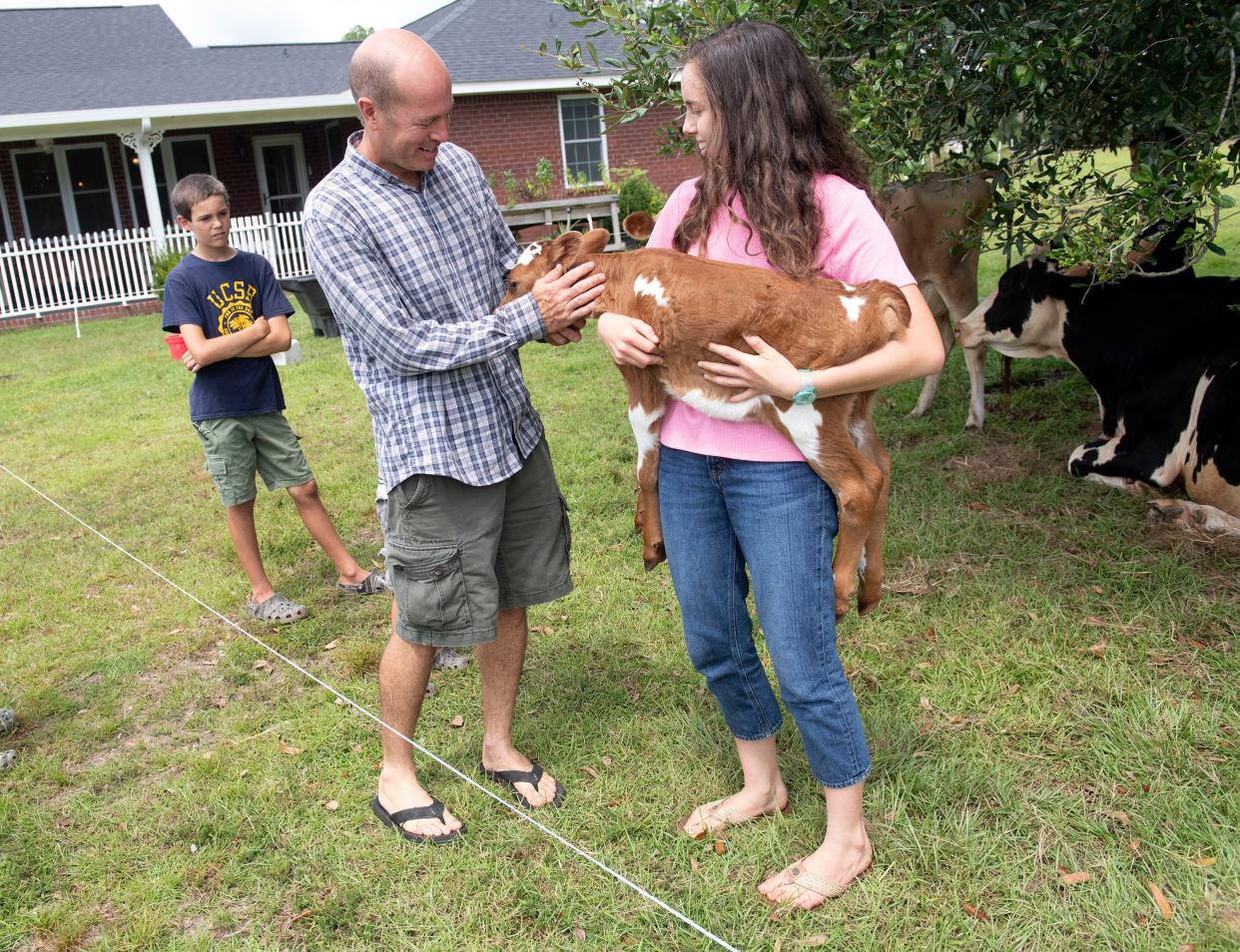Facing overwhelming public pushback, Santa Rosa votes against controversial rural density rule

Santa Rosa County Commissioners made a lot of people happy Monday when they pulled the controversial alternative subdivision provision from the Land Development Code.
After a lengthy discussion about possible changes to the provision to make it more palatable to the community at large, Commissioner Sam Parker announced he would not support keeping the alternative subdivision section in the Land Development Code because it had garnered too much opposition.
"There is so much public perception against this," he said.
The alternative subdivision provision was created to encourage developers to include more green space within their construction zones in exchange for building homes at higher density. This has not been supported by many who live on agricultural land where the zoning remains one home per acre.
Easily the most vocal in protest of the alternative subdivision provision has been the Fowler family, who live on farmland in Pace next to where the proposed 2,700 acre Jubilee development would be built. The company behind Jubilee, the Eagle Group, had envisioned creating a community on par with Walton County's iconic Seaside.
At every commission meeting for more than a year now, the Fowlers have lined up to speak, voicing their argument that the higher density development will impact the quality of life in their farming community. It is not clear whether the Fowlers developed a following for their cause or whether they opened the eyes of fellow community members to flaws in the provision.
More: Santa Rosa's proposed new Land Development Codes still prompt clear cutting, density concerns
Whatever it was, by Monday, their cause had grown to the point that commissioners claimed they'd received "thousands" of emails in opposition.
Parker said he didn't see the point in considering amending the provision at this time because the concept had garnered so much negativity. He described commission efforts to tweak the alternative subdivision provision to "pushing a boulder up hill" and blamed himself and his fellow tenured commissioners for "a horrible job" of communicating its benefits to the public.
Further support for the provision he said, could hurt the commission's case to the public for renewing the county's half-cent sales tax next year.
"Is the alternative subdivision worth rallying these people and pissing them off so they don't vote for the half-cent sales tax?" Parker asked fellow commissioners.
The vote to remove the wording of the alternative subdivision provision was decided by a 4-1 vote. Commissioner James Calkins, who said he saw no connection between the wording of the Land Development Code and the county's pending effort to extend the life of its half-cent sales tax, voted against the provision's removal.
"I was pleasantly surprised (with the outcome)," Fowler said. "We had a family meeting ahead of the meeting and decided we'd leave it all on the field and see what happened. People I'd never seen showed up to speak and the commissioners said they'd been slammed with emails. This was a skirmish that was won by the people."
County commissioners have not yet closed the door on their revision of the Land Development Code. Monday's meeting was continued and a vote to finalize the changes made will be taken at the commission's regular Oct. 26 meeting.
Though County Attorney Tom Dannheisser assured commissioners the wording of the alternative subdivision provision will have been removed when they next see the Land Development Code document, Fowler said he'll hold off celebrating the defeat of the provision until Oct. 27.
"We'll be at the Oct. 26 meeting to make sure (the code) gets adopted without the alternative subdivision provision," he said. "We'll push on through to have it totally removed."
Had the alternative subdivision provision survived, and it looked for much of the discussion surrounding it that it would, it likely would have been heavily amended.
Commissioners had already voted to add a stipulation that developers utilizing the alternative subdivision provision be required to put a 100-foot, community-owned buffer between their development and any land zoned agricultural.
A recommendation from Commissioner Kerry Smith that developers utilizing the alternative subdivision loophole be required to install sewer, rather than installing more housing reliant upon septic tanks, was also placed on the table for discussion.
Aaron Williams, a county Zoning Board member who is also running for Parker's District 2 county commission seat, braved the ire of the many who had stood to speak against alternative subdivisions when, at the end of the period set aside as a public forum, he made the case to keep the provision, but amend it.
"The alternative subdivision is a good thing," Williams said. "It allows us a model on how we're going to make developers do their developments. If we want to conserve land, we can use the alternative subdivision as a means of how we force developers to conserve land."
Related: Santa Rosa revised its development codes. What's changing about clear cutting - and what's not
Williams said that in his short time on the Zoning Board he had learned that the wording of the county's Land Development Code holds great weight.
"We need to figure out ways to put teeth in the Land Development Code to get us exactly what we want, procedures that don't give out these blank checks ... that say this is how you develop in Santa Rosa County. We do not allow people to come in and clear cut, you don't come in here and take all our trees. We dictate how you develop here. That's what you guys can do."
This article originally appeared on Pensacola News Journal: Santa Rosa Land Development Code won't include alternative subdivision

